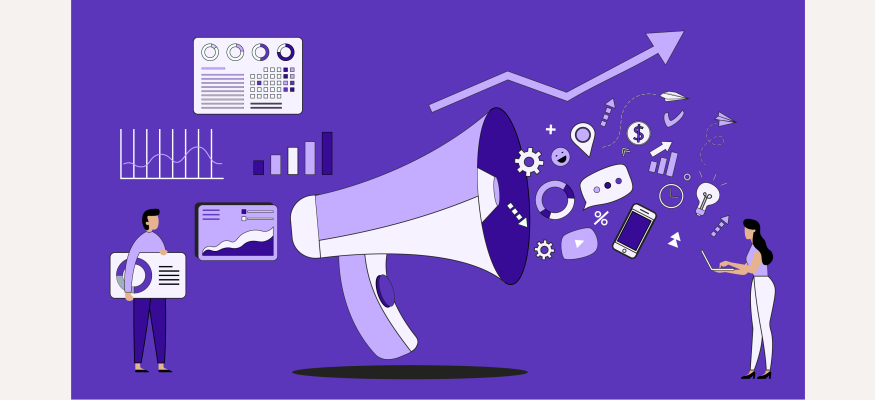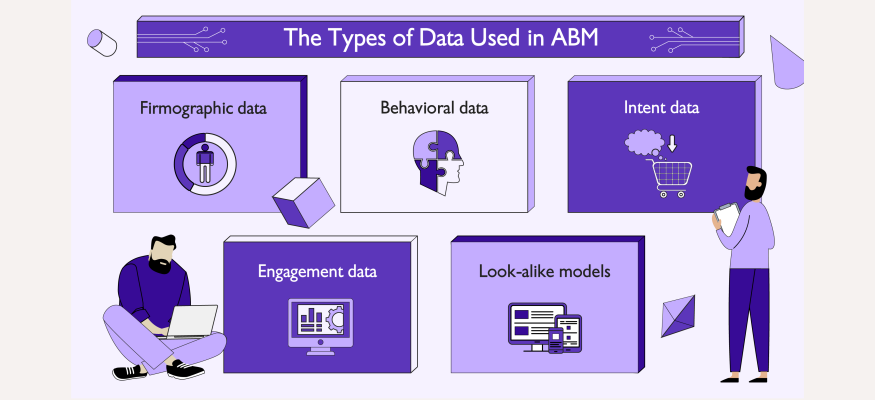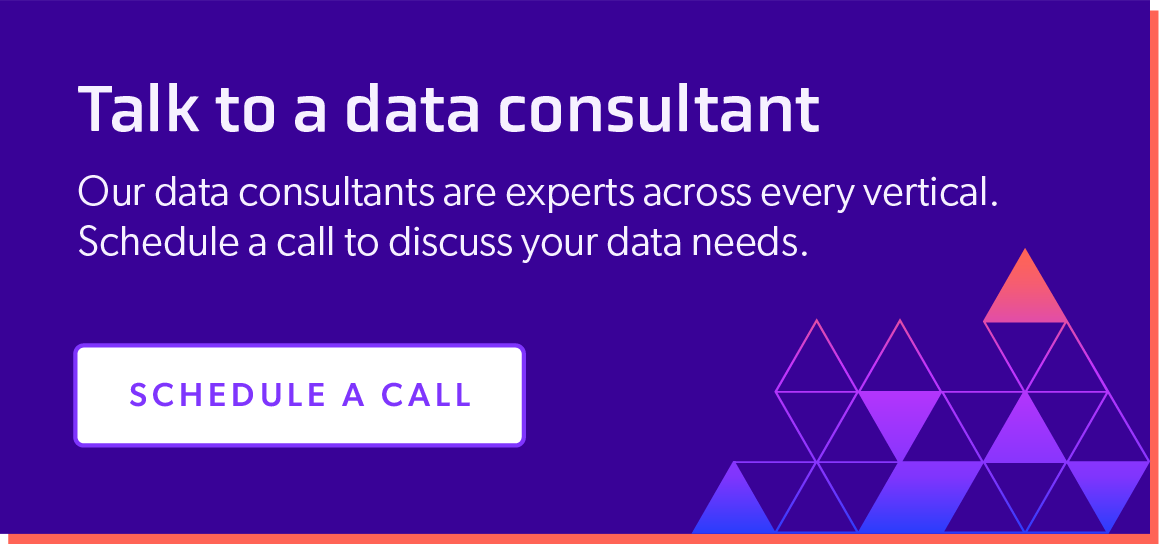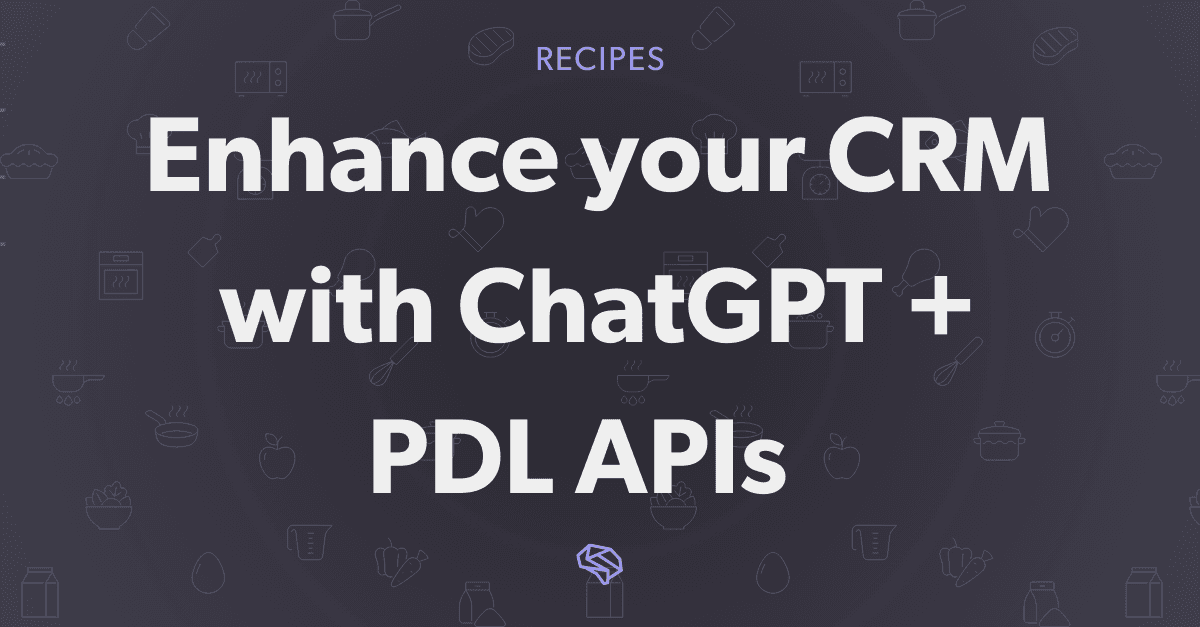
How Data Can Improve Your ABM Campaigns
June 11, 2021
Table Of Contents

The lines between B2B and B2C consumers are thinning. As shopping habits and demands are becoming intermingled, B2B customers now expect the same personalization, convenience, and omnichannel experiences they get from B2C transactions.
To meet the growing demand for personalization, organizations have been gravitating toward account-based marketing (ABM) to cater their messaging to their target audience.
In this article, you will take a deep dive into the nuts and bolts of ABM, discover how you can leverage it to boost your sales, and learn how the data you rely on can make or break your ABM campaigns - as well as how to identify high-quality data sources.
What is Account-Based Marketing (ABM)?
Account-based marketing is a strategy that singles out high-value, key business accounts within a market and uses personalized campaigns tailored to the specific characteristics of these accounts to increase the odds of a successful conversion.
In other words, account-based marketing is when you select the people or organizations you want to go after and actively target them with messaging that aligns with their needs.
Some account-based marketing tools you'll find in most campaigns include:
Email marketing platforms (to build email nurture campaigns)
CRMs (to manage contact information and engagements)
Ideal customer profiles (to target the right accounts)
Account-based marketing vendors (to gather contacts info for leads and accounts)
Ad platforms (to target and retarget high-value accounts)
As opposed to casting the net as wide as possible, the goal of ABM is to focus on a few accounts that may potentially have the biggest positive impact on your bottom line.
How ABM Works and Why It's a No-Brainer
There's a reason why 67% of brands leverage ABM to drive business and revenue:
Simply put, it works.
This is especially true when you're using highly accurate (and relevant) data to power your ABM campaigns. Marketers can attest to this:
80% say ABM improves lifetime value
86% say ABM improves win rates
But, how exactly does it generate results? In a nutshell, ABM campaigns entail the following four components:
Defining, targeting, and managing the best leads and accounts
Aligning marketing and sales teams
Personalizing engagements with leads and accounts
Measuring and optimizing campaigns to improve the results
An ABM strategy can't succeed unless it's targeting the right people. If you're driving leads from industries, companies, and departments that don't need your product or service (or have little to no decision-making power), your salespeople are guaranteed to struggle with closing deals.
Once you identify the best accounts and develop a strategy to connect with them, it's critical to align marketing and sales so their efforts don't conflict. Your aim should be to create a streamlined experience for potential customers at any stage of the sales funnel.
It's critical to focus on the marketing and communication channels your prospects use. If you don't, you'll miss opportunities to attract, connect, and convert them into loyal customers.
Then, with the right KPIs in place, you can learn what's working in your campaigns so you can make adjustments to improve your results. This step is critical and often overlooked, leaving many businesses in a rut where they continue relying on the same channels, content, or segments with nothing to show for the effort.
When done well, ABM can:
Increase the flow of high-quality leads
Speed up the sales cycle
Reduce customer churn
Boost revenue and the bottom line
Using ABM is a no-brainer for B2B brands because it reduces customer acquisition cost (CAC) while targeting prospects with a high customer lifetime value (CLV).
But to make it work, you don't just need more data. You need the right data.
Why Data is Key to Any Successful ABM Campaign

If you aim at nothing, you’ll hit it every time. By the same token, if you rely on inaccurate or obsolete data, your chances of making account-based marketing work are very slim as your marketing and sales teams zero in on the accounts with little to no value.
But, where do you get the right data? Essentially, there are multiple data sources you can use to fuel your account-based marketing campaigns:
1st party data
: Gathered directly from your assets (i.e., leads and accounts via forms on your website or analytics)
2nd party data
: Collected from mutual partnerships (i.e., an airliner sharing data with hotels)
3rd party data
: Bought from vendors that sell lead data gathered from various sources
Odds are, you're using all or the combination of these three data sources to build your database. The only problem is:
First-party data is often limited. Second-party data is the data you don't own and has restrictions, so you only get what's offered -- nothing more.
When your data is inaccurate or outdated, it becomes challenging to make ABM work as you are very likely to run into issues with creating personalized messaging that will resonate with your target.
To work around these issues, you can enrich your data to ensure accuracy and fill in the missing information. There are two ways to do this: manually or automatically using account-based marketing tools to enrich lead data (we recommend the latter).
The more complete and accurate information you have about your customers (i.e., firmographics, behavioral data, purchase history, etc.), the more effective your segmentation, marketing, and sales process will be.
The Types of Data Used in ABM
The more you know about your customers, the easier it becomes to create and run successful ABM campaigns. So, the key to unleashing the full potential of ABM is gathering information that gives you a clear picture of your target accounts.
Let’s take a quick look at the different types of data you should gather (and analyze) to develop a winning ABM strategy:
Firmographic data (company name, company size, job role, location)
Behavioral data (purchase history, search habits, downloads)
Intent data (where they are in the buyer's journey and whether they are “sales-ready”)
Engagement data (communications with sales and customer support via all channels)
Look-alike models (to develop ICPs of your best accounts).
With this information, you can develop segments and create highly targeted, personalized messages and content across all channels. This results in a better customer experience and improves the odds of converting leads and accounts into buyers.
By taking a data-driven approach to ABM, you can enhance customer experiences throughout the buyer's journey and guide them to a sale.
The Only Source of Data You'll Ever Need
“Before we started working with PDL, standardizing data before it would be enriched took as much work as actually getting results.”
- Unearth
As you already know, your ABM campaigns are only as good as your data, and your data is only as good as its source. If you're using unreliable, inaccurate information, then you'll struggle to get solid results from your ABM campaigns.
By partnering up with PDL, you can transform your ABM campaigns into a robust lead-generating machine.
If you'd like to learn more about how we can improve your ABM strategy, schedule a free consultation with our team today.
Like what you read? Scroll down and subscribe to our newsletter to receive monthly updates with our latest content.



